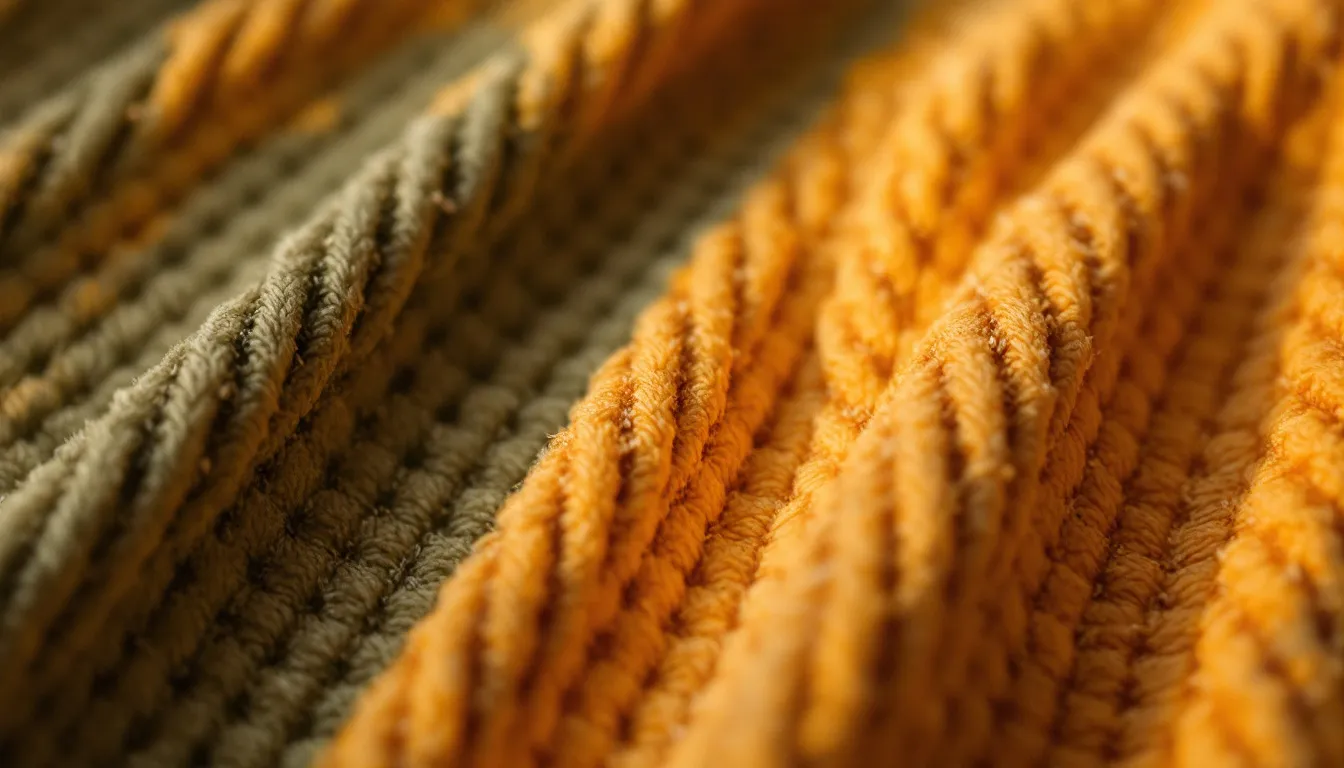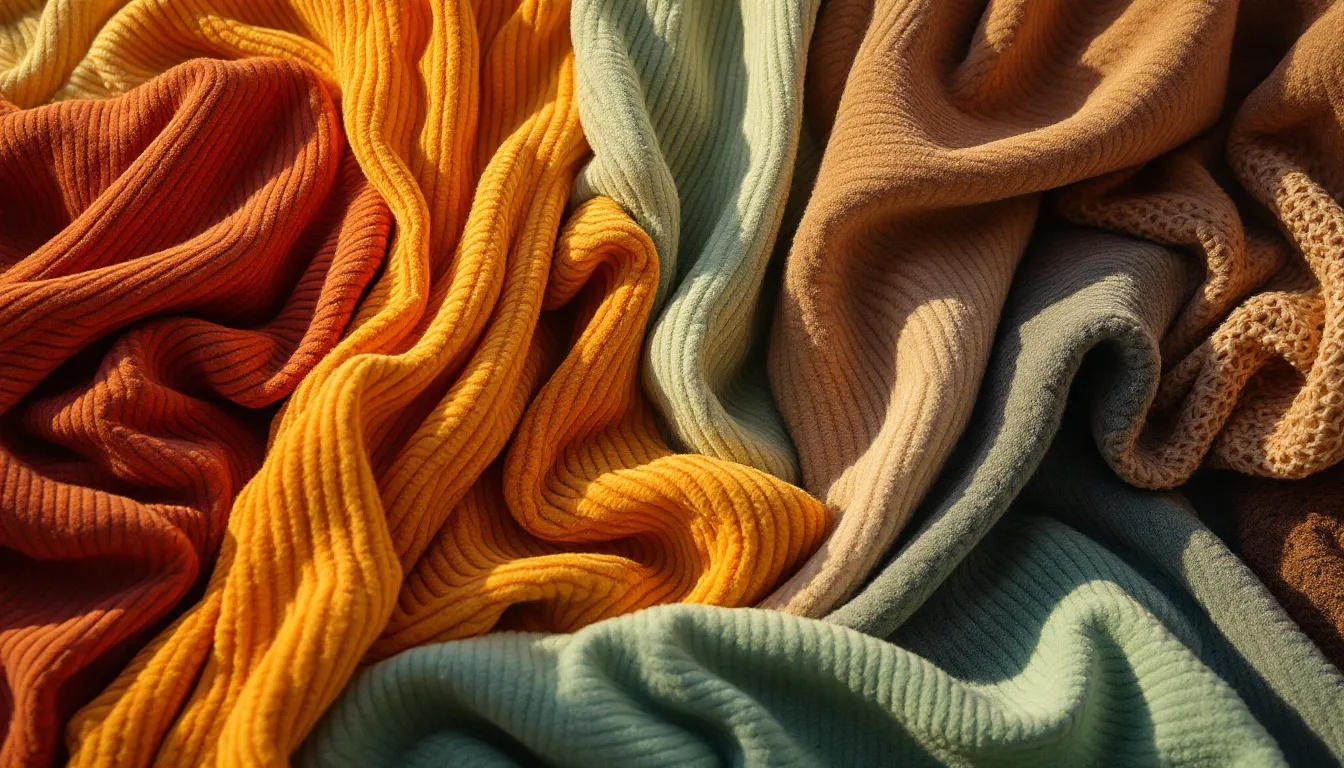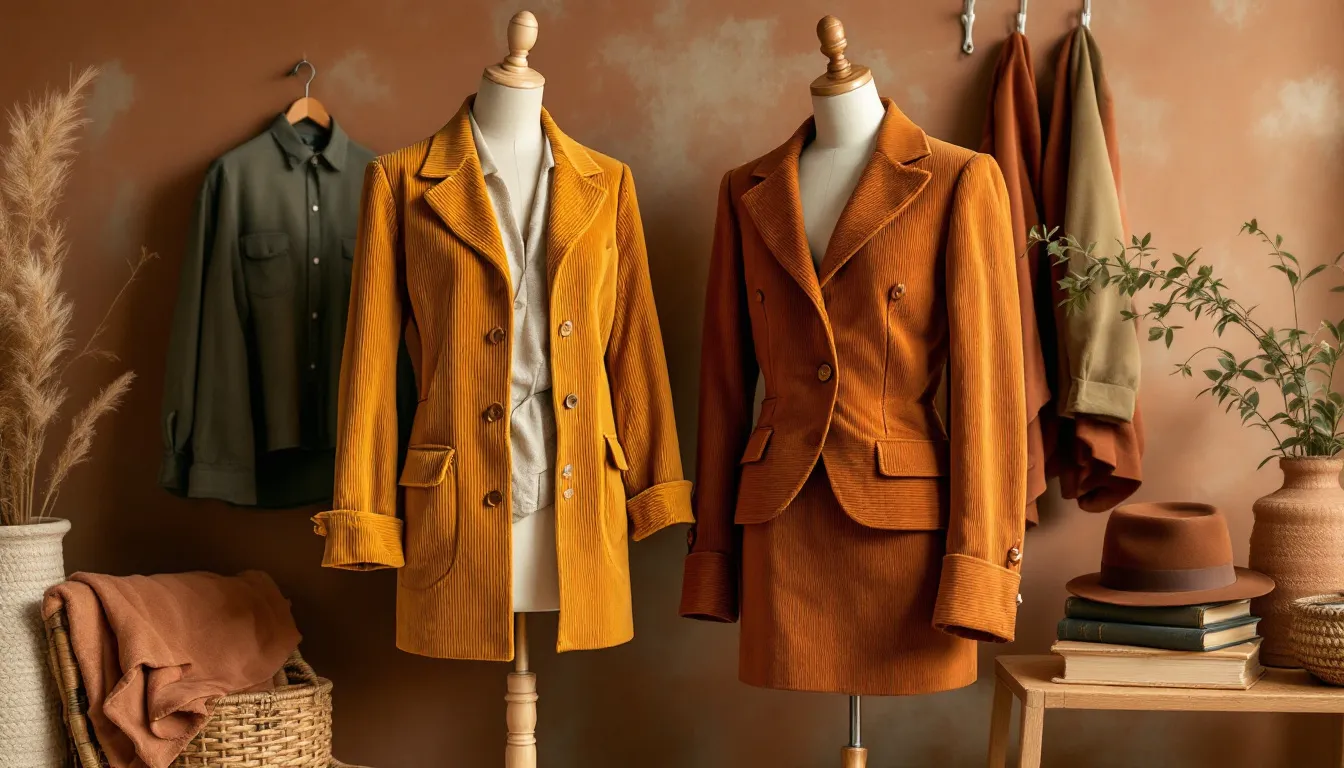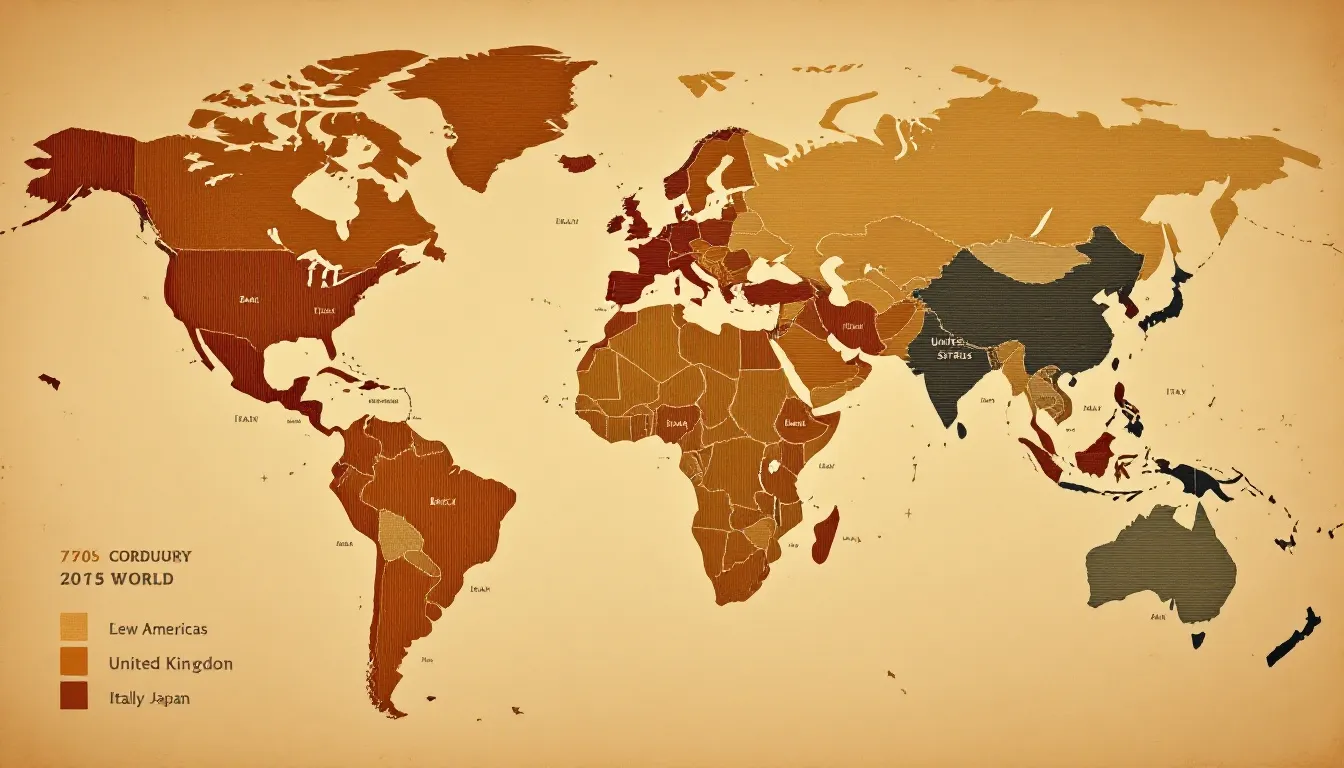Corduroy is a sturdy, rigid fabric that has stood the test of time. Known for its warmth, durability, and vintage charm, corduroy is making a strong comeback in modern fashion and home décor. But what exactly is corduroy? Where does it come from, and how should it be used?
This article explores the different types of corduroy, its technical features, manufacturing process, and practical applications—whether you’re sourcing textiles for apparel or upholstery or simply curious about this classic material.
What is Corduroy Fabric?

Corduroy fabric stands out as a robust, rigid material commonly crafted from cotton but also available in mixtures with synthetic fibers such as polyester to increase its versatility and strength.
This textile’s signature ribbed or cord-like surface does more than add aesthetic appeal. It is recognized for being sturdy, warm, and adaptable, making it suitable for various practical uses.
The style elements of corduroy are just as diverse as the purposes they serve. Corduroy can be found in an assortment of hues and designs, allowing customization to meet numerous stylistic requirements.
Its adaptability has led to widespread use in fashioning items like:
- trousers
- jackets
- shirts
- other clothing articles
It provides both stylistic elegance and utility.
Beyond merely being a type of cloth, corduroy signifies enduring quality. Its distinctive texture distinguishes it from other textiles, securing its place not only within the realm of apparel but also within home decor trends. Delving into the history and intricate details surrounding corduroy will enhance your appreciation for this exceptional fabric.
History of Corduroy Fabric
Corduroy’s origins can be traced to ancient Egypt, where a precursor fabric called fustian was first crafted. Famed for its robustness and distinctive texture, these properties are still present in the modern incarnation of corduroy. Over time, as the process of making fustian advanced, this eventually led to what we recognize today as corduroy.
During the 18th century, corduroy production flourished significantly in England, particularly in Manchester—a city that would coin its ‘Manchester cloth’—and this era saw its ascent in popularity.
Corduroy was widely implemented in both garments and upholstery materials. Although it started modestly, the tough yet economical nature of corduroy found favor with workers, thus gaining a working-class connotation.
While commonly thought to have originated from the ‘cord of the king’, such an interpretation regarding corduroy’s name is more mythical than factual. Regardless of true etymology roots, though, throughout history up until modern times, maintaining essential attributes—consistency remains relevant within the textile markets.
Its journey extends from its Egyptian inception through centuries, leading up to our current-day counterparts, proving testimony to enduring allure.
Technical Specifications of Corduroy
The wale count, which indicates the number of ridges found in each inch of corduroy fabric, is a critical characteristic that determines its texture. This measure can range from a low 1.5 to a high 21 wales per inch. The larger the spacing between wales, or fewer wales per inch, the rougher the feel to the fabric, while increasing their density leads to a smoother and softer finish. Consequently, this allows for an expansive variety of corduroy fabrics suitable for various uses.
Warp and weft yarns are interwoven to create corduroy’s distinct appearance, and these threads contribute significantly not just aesthetically but also functionally by affecting strength and durability among other properties. Considerations such as the thickness of these yarns, their resistance against color fading (color fastness), along with the aforementioned wale count intricately influence both how durable and attractive the final product will be.
It’s essential to comprehend these detailed elements thoroughly for those interested in choosing appropriate corduroy materials for specific applications or end-uses.
How is Corduroy Fabric Made?

Creating corduroy fabric requires a sequence of meticulous procedures that impart its distinctive features. Initially, the production starts with weaving, then proceeds to the application of glue and subsequent trimming of the pile yarn before concluding with coloring the material.
Each phase in this process is essential for establishing corduroy’s trademark ribbed surface while also reinforcing both its lasting resilience and aesthetic attractiveness.
Weaving Process
Utilizing a plain or twill weave structure, corduroy is crafted into a distinctively textured woven fabric. When employing the plain weave method, weft threads are interlaced over and under warp threads in an alternating fashion, while for the twill method, weft yarns traverse several warp yarns before going beneath one to produce its signature ribbed pattern. This sophisticated weaving process is crucial to establishing the texture that defines the fabric.
Corduroy’s hallmark ridges come from weaving in a pile thread which is subsequently cut to yield elevated ribs across the surface of the fabric. Not only does this step amplify corduroy’s tactile sensation, but it also bolsters its longevity and insulating properties. Integral to achieving these iconic raised stripes on corduroy is incorporating pile yarn during creation. It’s responsible for forming those prominent cords characteristic of this durable material.
Glueing and Cutting
In the manufacturing process, adhesive is used on the reverse side of the material to ensure that when pile yarn is sliced, it does not come out. This measure is crucial for preserving the fabric’s structure.
Later in the cutting stage, a shearing technique trims the fabric to create even lengths of pile, resulting in its characteristic small ridges. This precise procedure guarantees that the material retains its unique textural quality.
Dyeing Techniques
The process of pigment dyeing imparts a spectrum of dynamic colors onto corduroy fabric by adhering pigments to the fibers. This creates an array of color options and designs, making it particularly desirable for diverse fashion creations. The importance of dye in this method cannot be overstated, with pigment dye being integral to attaining those intense shades.
Known for its supple feel and a distinctively faded look that becomes more pronounced after each wash, pigment-dyed corduroy offers both aesthetic versatility through various patterns and hues as well as tactile benefits. Consequently, the resultant fabric is not just visually arresting but also pleasing to touch, contributing significantly to its allure.
Different Types of Corduroy Fabric

There are various styles of corduroy fabric, each distinguished by its distinct features. Styles such as standard, elephant, pinwale, pigment-dyed, spandex-enhanced and Bedford cord represent the diversity within this type of material.
Selecting a particular kind of corduroy depends on the preferred texture and look one aims to achieve. Understanding how these differences manifest is essential to making an informed choice about the fabric.
Standard Corduroy
Typically, standard corduroy fabric is characterized by a medium ribbed pattern where the cords have a width of about 1/8 inch and there are usually 11 lines of these ribs per inch. This fabric is quite versatile and can be employed in multiple uses ranging from clothing to upholstery.
Earthy tones such as brown, tan, and olive green are commonly associated with standard corduroy, reflecting its natural color palette.
Elephant Cord
Elephant cord fabric is characterized by its prominent wide wale cords and deeper ridges, which give it a textured and robust appearance. The number of wales per inch in elephant cord can vary greatly, typically between 1.5 to 6.
The sturdy texture of this kind of corduroy makes it perfectly suited for heavy-duty uses due to its durable nature.
Pinwale Corduroy
Pinwale corduroy is distinguished by its extremely fine ridges, sometimes including up to 21 wales per inch. This high density results in closely spaced, slender cords, making it perfect for crafting lightweight clothing items like shirts, dresses, and skirts.
Pigment-Dyed Corduroy
The fabric known as pigment-dyed corduroy is recognized for its unique, softened texture and a characteristic faded look that emerges over time with each wash. This distinctive appearance, achieved through the process of pigment dyeing, renders it an attractive choice for numerous fashion uses.
Spandex Corduroy
Corduroy that incorporates spandex is crafted from a mixture of cotton and spandex, which boosts its stretchiness and comfort levels. Clothing pieces such as pants, skirts, and jackets often utilize this flexible type of corduroy when elasticity is needed.
Bedford Cord
Crafted from a combination of cotton, wool, and synthetic fibers, Bedford corduroy fabric offers warmth and softness. This fabric stands out with its broad ribs and unique lateral pattern.
Common Uses of Corduroy Fabric

Corduroy fabric’s distinctive texture and robustness position it as an outstanding option for a range of uses, in conjunction with other materials. Although its cost exceeds that of standard fabrics, its unique qualities provide consumers with additional benefits.
Cotton corduroy is employed extensively in producing garments, upholstery items, and various accessories. This demonstrates its versatility as a fabric choice in both fashion apparel and interior design.
Clothing
Corduroy is a fabric widely employed in the creation of various garments, including pants, jackets, skirts, and dresses. Its adaptability is demonstrated through an assortment of styles, ranging from pinwale corduroy shirts to thicker variations ideal for chillier climates. Multiple designs for corduroy pants, such as bootcut, straight-leg, and skinny fits, cater to diverse sartorial tastes.
The material gains particular favor during the autumn and winter seasons owing to its capacity to provide warmth and coziness. Due to their flexible nature, corduroy dresses can be fashioned for both laid-back and more sophisticated events. Its seasonal demand, coupled with expansive styling possibilities, has established corduroy as an essential component in numerous clothing collections.
Upholstery
Due to its robust texture and easy maintenance, corduroy is a favored material for upholstery, offering durability and simplicity in cleaning. Elephant corduroy is especially popular for covering furniture, as well as crafting jackets and pants, making it an excellent selection for numerous furniture-related uses.
Accessories
Corduroy is frequently used to produce accessories like bags, shoes, and hats due to its distinctive texture and strength. This material adds durability and infuses a stylish flair into everyday accessory items.
Environmental Impact of Corduroy Fabric
The ecological impact of corduroy fabric differs depending on the materials employed. Natural fibers such as cotton typically exert less environmental strain, in contrast to synthetic fibers, whose creation is more detrimental due to their manufacturing methods. Corduroy can be accredited with different certifications reflective of its fiber composition, which confirms that it meets certain eco-friendly norms.
Corduroys crafted from synthetic materials might achieve ISO certification, signifying that they meet globally recognized standards. The specific variety of cotton and the dyeing techniques used are also influential in determining corduroy’s total environmental effect. Recognizing these elements is essential for making choices that favor environmental sustainability.
Major Producers of Corduroy Fabric

China has established itself as the premier global supplier of corduroy fabric, boasting impressive export strengths. This leading position in the market is thanks to its state-of-the-art manufacturing processes and extensive production infrastructure. The forecast suggests that China will maintain its role as a dominant exporter of corduroy fabric, serving an international clientele.
In the realm of corduroy fabric commerce, India has emerged as another key contributor experiencing an upsurge in both production and exportation prowess. This rise is propelled by escalating domestic consumption coupled with burgeoning opportunities for exports within India’s growing markets.
The contemporary scene surrounding corduroy fabrication has undergone notable changes, positioning nations such as China and India at the forefront of this industry’s major manufacturing centers.
Cost of Corduroy Fabric
Due to the complexity involved in its creation, corduroy fabric typically commands a price that is roughly 10-20% greater than that of plain weave fabrics made from identical materials. The intricate process of weaving, along with additional steps such as gluing, cutting, and dyeing required for producing corduroy fabric, are the primary reasons behind this increased cost.
Despite these higher prices, consumers often find value in purchasing corduroy due to its unique qualities and robustness. Its notable texture and adaptability lend themselves well to various uses within both apparel design and interior decoration. By recognizing the elements that influence the pricing of corduary fabric, buyers can make more knowledgeable choices when buying it.
Certifications for Corduroy Fabric
Corduroy fabric made from wool can achieve certification by Woolmark, which signifies a commitment to quality and compliance with rigorous industry standards. This designation acts as an indicator of the corduroy’s superior performance characteristics and its lasting durability. The presence of this certification on products crafted from wool corduroy serves as evidence of their high-quality nature.
If the corduroy incorporates American pima cotton, it may be granted certification by the American Supima Association. Such recognition underscores the exceptional grade of cotton utilized in crafting the fabric, verifying that only top-tier materials have been employed.
These forms of accreditation are vital for upholding elevated standards within the realm of corduroy fabrics, thereby giving consumers added confidence when they invest in these textile goods.
Summary
Corduroy fabric is a resilient and adaptable material with a long history dating back to ancient Egypt. It has continuously adapted over time, serving diverse sectors with its distinctive ribbed surface and broad assortment of varieties. Widely favored for garments, upholstery items, and various accessories, corduroy’s popularity is fortified by its compelling past, detailed characteristics, and eco-friendly aspects. As you delve into the realm of corduroy fabric, consider incorporating its robustness and adaptability into your forthcoming apparel or home decorating endeavors.
Frequently Asked Questions
What is corduroy fabric?
Corduroy is a durable, rigid fabric primarily composed of cotton, known for its strength and distinct texture.
Its unique design makes it a popular choice for both clothing and upholstery.
How much does corduroy fabric cost compared to plain-weave fabric?
Corduroy fabric costs 10-20% more than plain weave fabric from the same fibers.
Therefore, budget accordingly if you prefer the textured quality of corduroy.
Where was corduroy fabric first produced?
Corduroy fabric was first produced in England.
Which country is the biggest exporter/producer of corduroy today?
China is currently the largest exporter and producer of corduroy.
What are the different types of corduroy fabric?
Corduroy fabric comes in various types, including standard corduroy, elephant cord, pinwale corduroy, pigment-dyed corduroy, spandex corduroy, and Bedford cord.
Each type offers unique textures and uses suitable for different applications.





